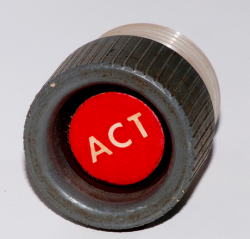
We talk most about traffic, leads and sales here on the blog.
Leads and sales are a big part of business blogging.
And that’s what we’re going to focus on today because in order for a blog to be successful it has to accomplish goals. For businesses, the goal is to increase sales and profit.
And you can’t have those two things without conversion.
Blog Conversion
There are a few different conversions we focus on for our blog and for client blogs. We always try to get back to sales and profit. To do that we focus on the things that we find directly lead to those outcomes.
Traffic is one we keep track of at GBW and for a few clients. It seems that as traffic increases the number of email subscribers, contact form inquiries, etc. increase. It’s not a perfect science, but we do keep track of it as a pretty good gauge of effectiveness.
Comments is one we don’t really keep track of for our blog or for client blogs. I haven’t really seen a correlation of comments and sales and leads.
Now, let’s move on to getting conversions on your website. You’ll notice that the GBW Blog is pretty simple. There is not a lot going on and there’s a reason for that.
Here are some little known facts that could be affecting your blog and website conversion.
1. Clutter
I love a simple website design and I’m not the only one. Derek Halpern of Social Triggers wrote a great post about clutter. If you have too many options for people they will simply choose none of them.
You might get a click here and there, but you’re missing conversions.
The way I like to think about web design and setup is to focus on the very main action I want visitors to take on each page. I start with that conversion and make it the most prominent. The rest are secondary conversions or goals and they are hidden away on the page.
For example, the Contact page link is on every page on GBW. There are a few pages where it’s the number one priority call-to-action. The page you’re reading doesn’t heavily promote the Contact page. Why? Because you’re probably not ready to contact GBW to hire us right now.
That’s why you’re asked to read more posts and to signup for the newsletter.
However, if you are curious about us you can still easily visit the homepage, About page and Services page. And you can easily contact us.
But the page is not cluttered.
2. Unanswered Questions
Here is an interesting study over on KISSmetrics. They start talking about the location of the call-to-action on the page. What they found was that it really didn’t matter where the button was on the page.
What did matter was making sure all visitor questions were answered on the page or somewhere on the site.
If your visitor has any unanswered questions they’re going to leave your site. You haven’t convinced them. They still have doubts. In order to improve conversion you need to answer all the same questions your prospects have when you see them in person.
3. Wrong Call-To-Action
Sometimes we put the wrong call to action on the page. This is the problem with the contact call-to-action on the wrong page.
Let’s say someone comes to your homepage. It’s their very first time seeing your brand.
Now, you’re going to ask them to contact you right away at that point?
You wouldn’t ask a person you just met to marry you as your first words would you?
Think about the sales cycle for your company. You go through this all the time with people in person. You have to take them through questions and answers. They have to see examples and hear your stories. You have to get to know them.
Take your website visitors through the same journey where each page has a primary call-to-action linking to the next step in the sales cycle.
You can still have the contact CTA on the homepage, but it will be a secondary CTA.
4. Confusion
Each of these points can cause confusion. Not having a full understanding of the website is a big reason people leave. If they have no idea what they’re looking at they have no reason to stay on the page let alone contact you and convert.
The folks at Conversion Rate Experts talk about this all the time. They look for the things that confuse visitors and they alleviate the confusion on the site.
The results usually work out well for the website owners.
5. Long-Term Profit and The Right Visitor
Kevin Hillstrom has been working with conversion long before the web. That’s right, conversion existed before the web.
Kevin is always talking about long-term conversion and how online conversion experts often miss that point focusing instead of the one-time sale. That’s why we see so many discounts in emails and on social media. They convert once even if the long-term impact is not good for the brand.
Kevin had this great analysis focusing on the right visitor.
In the example it was actually the visitor that had the lowest conversion rate that purchased the most. They visited the site so often that it affected the conversion rate yet the site would really want this person to be there.
You have to watch for things like this and it starts with focusing on the right visitor.
That is a huge part of what we do at GBW for ourselves and for our clients. We have to make sure we’re generating the right kind of traffic with the focus of each post we create.
Conclusion
Over the years I’ve worked on various conversion projects for online retailers and B2B websites. There are some things that are different from site to site, but the points listed above are pretty universal.
Image: Dwight Sipler
